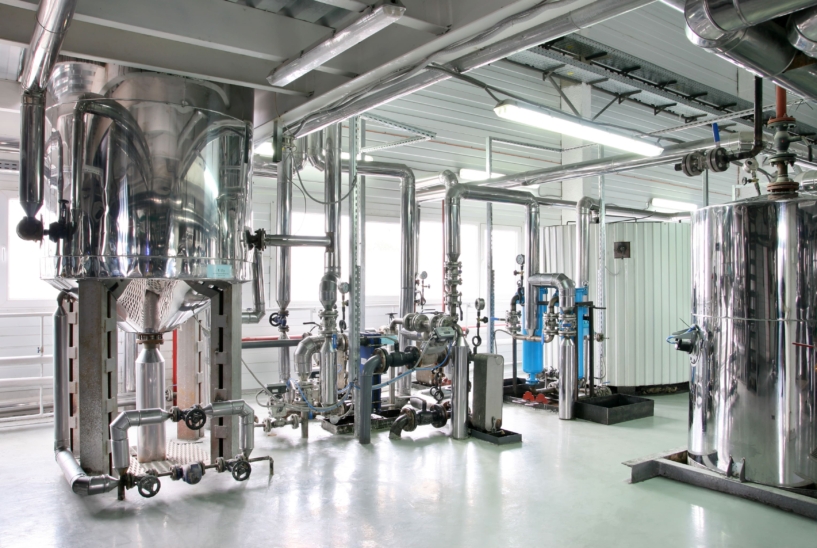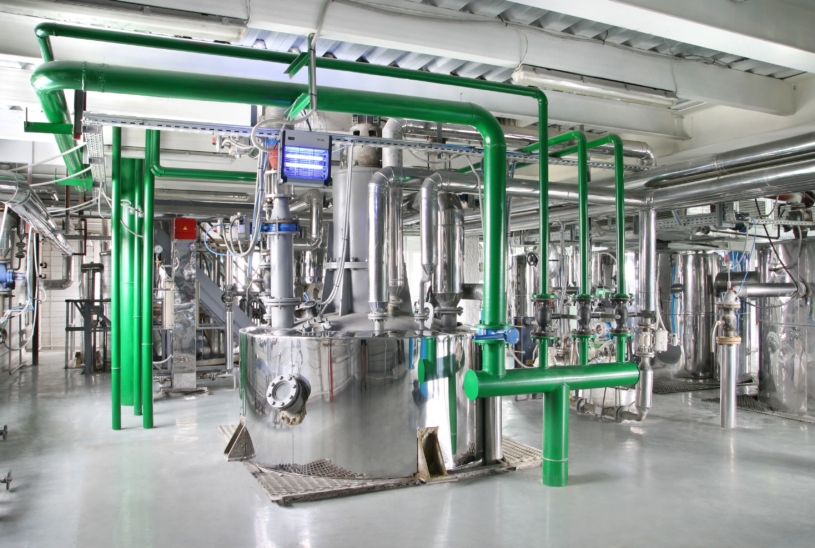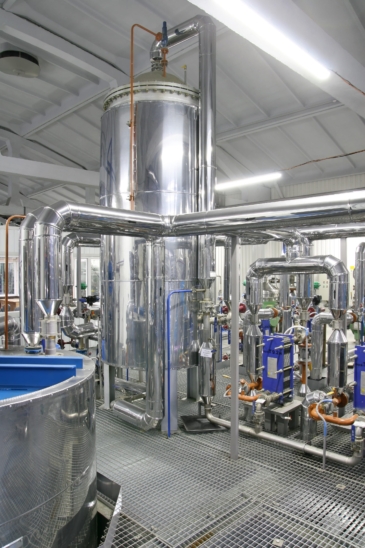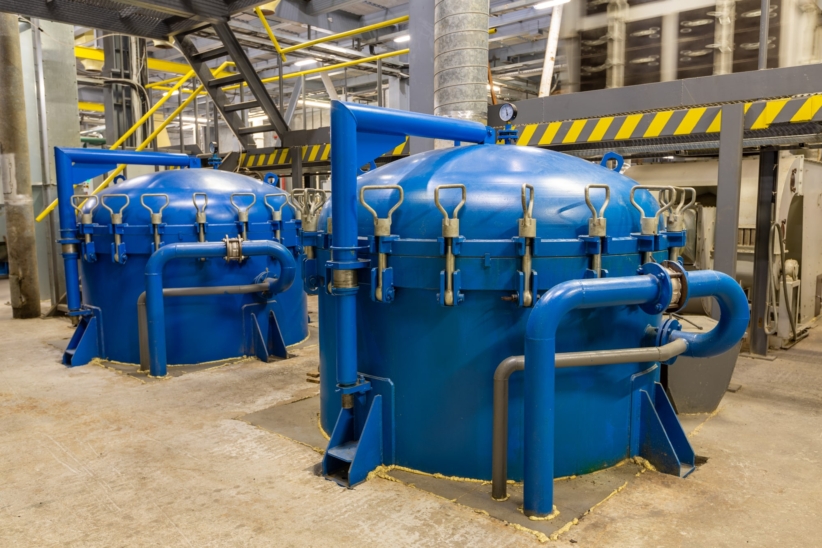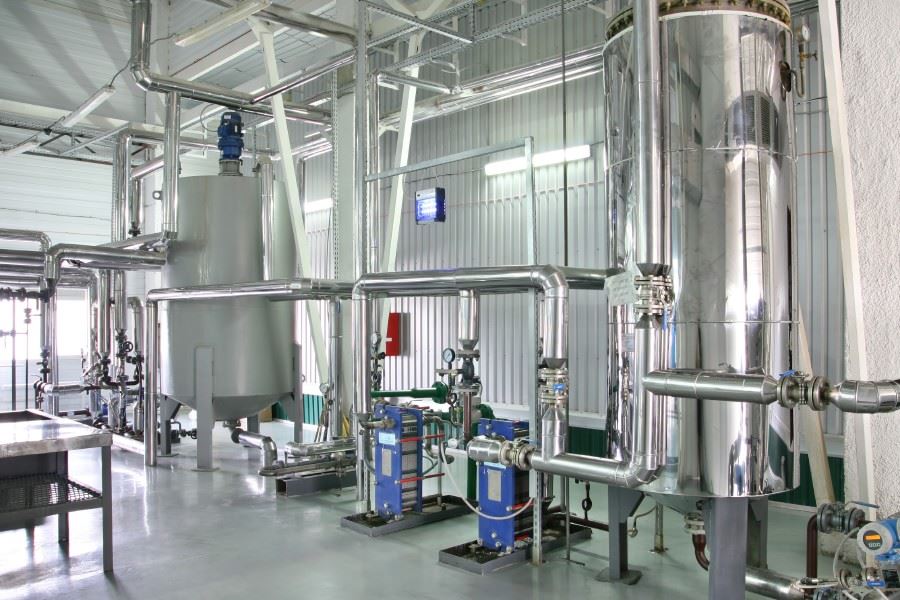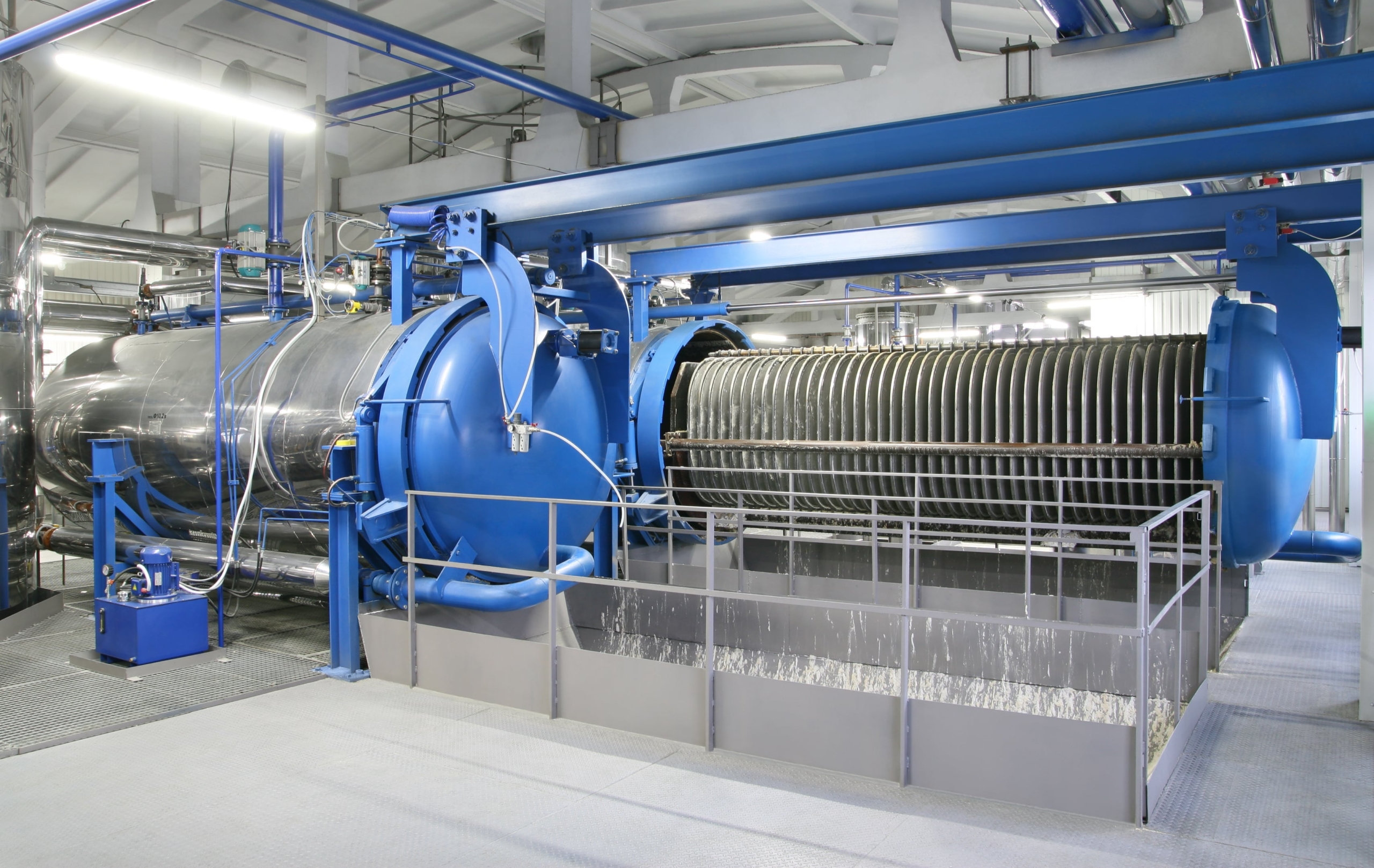Line of bleaching (adsorbtion) of vegetable oil
Description of the production line
The technological assignment of bleaching (adsorption) lines of vegetable oils is to remove coloring substances, as well as a certain amount of peroxide compounds and phosphorus-containing substances.
The capacity of the bleaching lines of our production is from 30 tons per day.
The principle of operation of the vegetable oil bleaching line:
- Adsorption treatment.
Dehydrated vegetable oil is pumped through the heat exchanger, where it is heated to the calculated temperature, into a vacuum-bleaching apparatus. A solution of citric acid is added to the oil stream to deactivate traces of soap and metal. The adsorbent is fed into the vacuum bleaching device by a dosing device. In the vacuum-bleaching apparatus, the oil is intensively mixed with the adsorbent. The suspension is sprayed in the upper part of the installation and after passing a number of partitions, it accumulates in the lower part. The vacuum in the device is created with the help of a steam ejector unit.
- Oil filtration.
After the vacuum-bleaching apparatus, the suspension is pumped to the filtration process in one of the filters. After the filtration process, the bleached oil is fed into the oil tank for further processing, and the adsorbent with impurities that settled on the filter plates in the form of sediment is dried by steam and is removed from the filter.
Dropseparator helps separate steam from moisture and oil. The latter merge into the tank, and the steam is removed into the atmosphere. In the tank, water and oil are separated by settling. With the help of a vacuum, oil is drawn into the vacuum-bleaching apparatus, and the water enters the grease trap.

